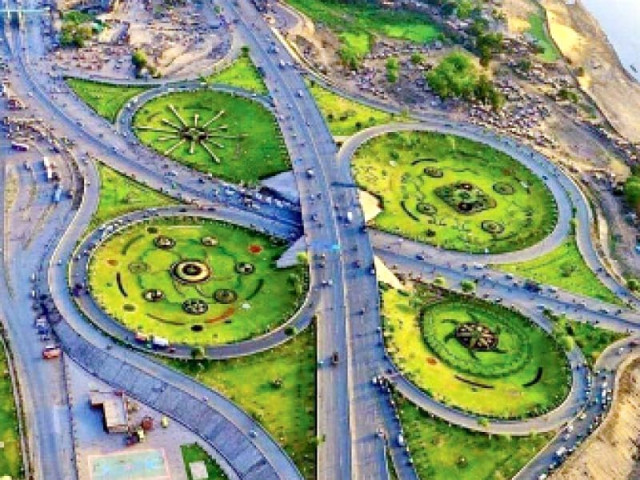Towards V-shaped recovery
Govt would like to have current account surplus to achieve growth with stability

Is the economy looking up? The data released by the Pakistan Bureau of Statistics (PBS) suggests an affirmative answer to the question.
The economy seems to be moving towards a V-shaped recovery. Having registered pretty robust growth of 5.22% and 5.53% in FY17 and FY18 respectively, the economy decelerated to 2.08% in FY19 before contracting 0.47% in FY20.
However, during the outgoing financial year (FY21), the economy is projected to register 3.94% growth.
The 3.9% growth is by no means satisfactory, especially if seen in the context of 0.47% economic contraction during the preceding year (the problem of a low base). However, it does indicate that the economy is more resilient than predicted by most observers and analysts. At the same time, it would be premature to assert that the economy is out of the woods.
Two factors make the economic recovery look plausible. One, instead of being undergirded by one sector, the economic growth during FY21 has been broad-based.
Agriculture has grown 2.77%, industry 3.57% and services 4.43%. Manufacuring, which is part of the industrial sector, has expanded 8.71% including 9.3% expansion of its mainstay — the large-scale manufacturing (LSM). Again, the low growth base can’t be discounted as LSM had contracted 10% during full FY20 including 5.1% during the first nine months.
Likewise, in agriculture, major crops have registered 4.65% growth. Although lower than last year’s 5.2% growth, it’s a fairly healthy growth rate. But for the 22.8% contraction in cotton output, the major crops sub-sector would have shown much higher growth. The output of rice, sugarcane, wheat and maize grew 13.6%, 22%, 8.1% and 7.38% respectively.
The declining cotton output, however, remains a matter of serious concern as FY21 is the third consecutive year in which this vital crop’s produce has contracted (17.24% in FY19 and 7.14% in FY20). This suggests that some systemic issues are at work here. The second positive thing is that unlike in FY17 and FY18, the FY21 growth is not accompanied by a high external sector deficit. In fact, for the first time in several years, the current account balance has turned positive. In the first 10 months of FY21, $773 million current account surplus was recorded compared with $4.66 billion deficit registered during the corresponding period of FY20. The major factor behind this turnaround is remittances, which increased to $24.24 billion during FY21 (July-April), showing 29% year-on-year growth.
Balance of payments
Being an exogenous factor, cash inflows from overseas Pakistanis aren’t an indicator of economic health or a trust in the overall macroeconomic environment; even a weak economy may receive great gobs of remittances.
However, such inflows are always helpful for a capital-deficient economy like Pakistan in overcoming balance of payments (BoP) problems, alleviating the liquidity crunch, and pushing up aggregate demand and consumer spending.
During FY21 (July-April), exports registered YoY expansion of 13.63% to reach $20.90 billion. For the full year, exports are projected to reach $25 billion. If this happens, it will be the second occasion in the country’s history that exports have touched $25 billion. Earlier, in FY14, exports had reached $25.11 billion.
The textile group, the largest sector of the economy, saw 17.35% export growth. However, the food group, the second largest sector, saw 0.42% drop in exports, mainly because of 3.69% decrease in rice exports.
At any rate, in view of the growth recession or contraction in Pakistan’s major markets, the uptick in exports is a creditable achievement.
Imports increased 17.79% YoY during this period to reach $44.74 billion, thus outpacing export growth. As a result, trade deficit during FY21 (July-April) sat at $23.84 billion against $19.59 billion over the same period of FY20. As a rule, when economic growth accelerates, imports also go up in response to the upturn in domestic demand.
Foreign investment
It’s exceedingly difficult for a capital-deficient economy to register sustained growth without injection of foreign capital. During FY21 (July-April), FDI into Pakistan decreased to $1.55 billion from $2.30 billion in the same period of previous year. One capital reason for the fall may be the uncertainty created by the pandemic, which is making investors reluctant to undertake long-term commitments.
Pakistan, however, received $2.18 billion in foreign portfolio investment (FPI), or hot money as it is called.
Inflation remains difficult to control. During FY21 (July-April), 11.1% CPI inflation and 16.6% WPI inflation were recorded, up from 9.1% and 14.6% respectively during FY21 (July-March). The central bank, however, has persisted with the 7% policy rate to facilitate businesses.
Headwinds
Looking forward, the government expects the economy to grow close to 5% during FY22 and further to 6% during FY23 — the last financial year before elections are held.
The government would also like to have the current account in surplus, or at least in small, manageable deficit, to achieve “growth with stability”. Several headwinds may make reaching the targets arduous.
One, a major reason for the star performance of manufacturing during FY21 is utilisation of excess capacity after 7.4% contraction during FY20.
For the manufacturing to grow at least 5% during FY22 and beyond, substantial new investments will have to be made. By curtailing duties on imported raw material, components and equipment and by reducing the overall cost of doing business through regulatory reforms, the government can encourage new investments.
But are our businesses ready to switch from quick-yielding or speculative ventures to painstaking, long-term projects?
Two, a bad wheat or rice crop together with continuing declining cotton output can cause agricultural growth to recede.
Three, a spike in world commodity, particularly oil and food, prices may balloon up the import bill. Should exports fail to keep pace with import growth, trade deficit will scale up. At any rate, in the face of a narrow manufacturing and agricultural base, it will be an uphill task to stifle imports as economic growth accelerates. Import compression policies can help reduce import bill but only at the cost of suppressing consumer and business demand.
Four, is the substantial surge in remittances during FY21 sustainable or a one-off phenomenon? We don’t know yet.
If remittances are not enough to fill the gap between exports and imports, current account balance will come under duress and the goal of achieving growth with stability will be undermined.
Finally, inflation needs to be contained. High inflation will force the central bank to tighten the monetary policy, which may impede growth.
The writer is an Islamabad-based columnist
Published in The Express Tribune, June 14th, 2021.
Like Business on Facebook, follow @TribuneBiz on Twitter to stay informed and join in the conversation.



















COMMENTS
Comments are moderated and generally will be posted if they are on-topic and not abusive.
For more information, please see our Comments FAQ